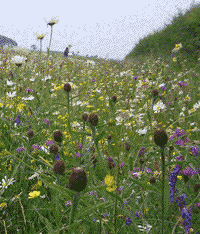Revealed: plan to fend off set-aside replacement

Farm leaders have unveiled proposals aimed at staving off a compulsory replacement for set-aside in England.
The NFU and Country Land and Business Association formally released their proposals for voluntary measures on Tuesday (21 April).
The document was published following a meeting of NFU Council members at Leamington Spa, Warwickshire.
It can be downloaded here (289KB pdf file).
Proposals include a Campaign for the Farmed Environment (CFE), which would bring together organisations and bodies spanning the farming industry. It would include advisory bodies, conservation groups and government agencies.
The CFE would use a combination of measures – primarily the Entry Level Stewardship Scheme (ELS) and additional voluntary measures – to help farmers boost farmland bird populations by recapturing the environmental benefits associated with former set-aside land.
Industry leaders have spent two months devising proposals they hope will fend off government plans to take up to 5% of English arable land out of production
Although set-aside has been abolished across Europe, DEFRA wants to retain its environmental benefits in a bid to reverse a decline in bird numbers.
It is considering both compulsory and voluntary approaches.
The voluntary approach favoured by farm leaders would see growers encouraged to meet DEFRA targets by undertaking on-farm measures to boost bird populations.
The aim would be to identify and promote environmental practices that growers could undertake as part of stewardship agreements and more generally.
Advisers would then promote these practices to growers during farm visits.
DEFRA wants to increase the uptake of agri-environment schemes to 70% of available farmland by March 2011.
At the moment, ELS uptake averages only 55% across England.
The government also wants a 40% increase in the in-field ELS options that particularly benefit farmland birds.
Farmers will be encouraged to introduce stewardship options best-suited to their geographic area and to the needs of bird species within their locality.
The government prefers to see this as better targeting rather than raising the bar.
To be successful, the voluntary option would have to make significant progress towards these targets within two years.
If it failed, growers would then face the prospect of compulsory measures requiring them to manage 5% of eligible arable land for environmental purposes.
